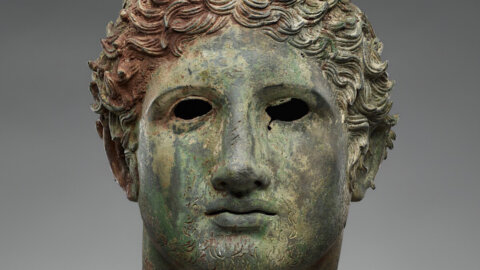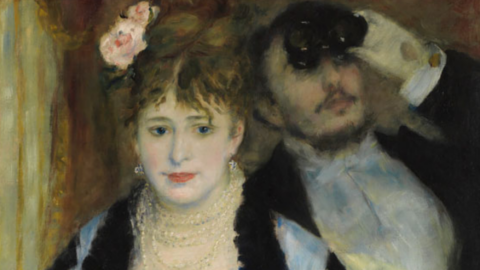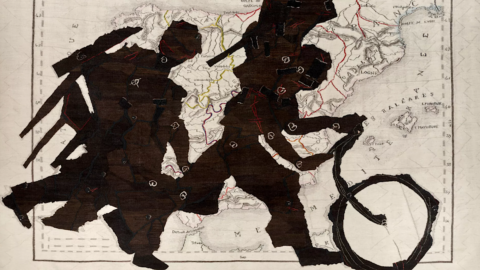Throughout their fifty years of marriage, the couple has embarked on an inspiring journey into business, family and collecting, a loving partnership that has resulted in an outstanding collection of fine art. The Impressionist and Modern selection comprises 16 lots. Additional works from the collection will be sold through the American Art Sale in New York on November 20, and the Old Evening Sale Sale in London on December 6. Together, the collection is expected to top $50 million.
Born in Brooklyn in 1926, Herbert J. Klapper was the son of a sewing machine salesman; his future wife, Adele, was born three years later in Brooklyn to European immigrants. Both Herbert and Adele Klapper embodied the ambitious XNUMXth century “American Dream”. Mrs. Klapper dropped out of college to help support her family. After returning from military service, Mr. Klapper began working at his father's sewing machine sales company in the Manhattan garment district; nearby, Adele Klapper was employed by the International Ladies Garment Workers Union. And so it was that a chance meeting between young Herbert and Adele at a local restaurant lunch provided the spark for what would become a half-century of marriage.
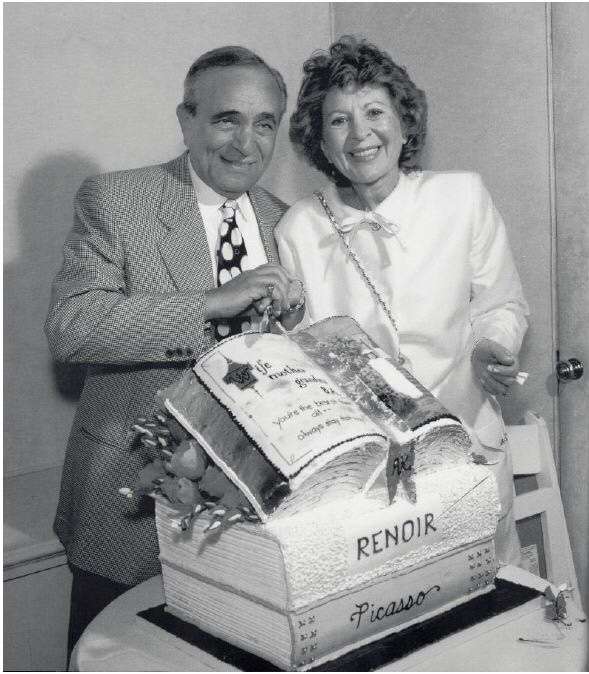 Klappers' extraordinary business successes came after years of entrepreneurship and hard work as Mr. Klapper transformed his father's business into Superior Sewing Machine and Supply Corporation, the world's leading supplier of sewing machine parts and components. sew. In art, Mr. Klapper was able to use this same business acumen and attention to detail to benefit a substantial private collection.
Klappers' extraordinary business successes came after years of entrepreneurship and hard work as Mr. Klapper transformed his father's business into Superior Sewing Machine and Supply Corporation, the world's leading supplier of sewing machine parts and components. sew. In art, Mr. Klapper was able to use this same business acumen and attention to detail to benefit a substantial private collection.
Working with reputable gallery owners and auction house specialists, the Klappers constantly acquired outstanding examples of Old Masters, Impressionist and Modern art. The pair have painstakingly curated their assemblage to focus on the best from artists such as Pablo Picasso, Auguste Rodin, Jean Arp, Claude Monet, Pieter Brueghel the Younger, Paul Cézanne, Pierre-Auguste Renoir and Edgar Degas.
Leading the collection is The staircase à Vetheuil di Claude Many, 1881 ($12-18 million). With its stunning profusion of flowers and leaves, this sun-drenched canvas captures the splendor of high summer in Monet's garden at Vétheuil, a rural hamlet the artist called home from 1878 to 1881. The stairway in the center of the canvas serves as a compositional anchor for a series of four closely related views of the house and garden, which Monet created during the height of the summer sun. The current L'escalier à Vétheuil was most likely the first of the series to be created, its close-up view of the unpopulated steps suggesting that the artist set up his easel on the upper terrace to capture the panorama. The decorative quality of the Vétheuil garden scenes was very clear to the contemporary market. Monet sold all three plein air canvases within a year or two of their execution, keeping only the National Gallery studio variant. The current version's first owner was Pennsylvania Railroad magnate Alexander Cassatt, brother of Impressionist painter Mary Cassatt and a pioneering American New Painting collector; the canvas entered his collection around 1883, when Monet's work was still little known across the Atlantic. In the spring of the same year, Monet and his extended family moved downstream to Giverny, where the artist's garden as a subject for modern painting would finally reach its apogee. L'escalier à Vétheuil is the last of four in the series to remain in private hands: one version hangs in the National Gallery in Washington; DC, another is in the Norton Simon Museum in Pasadena; and the third was bequeathed by legendary California businessman, philanthropist, and collector, A. Jerrold Perenchio, to the Los Angeles County Museum of Art in 2014.
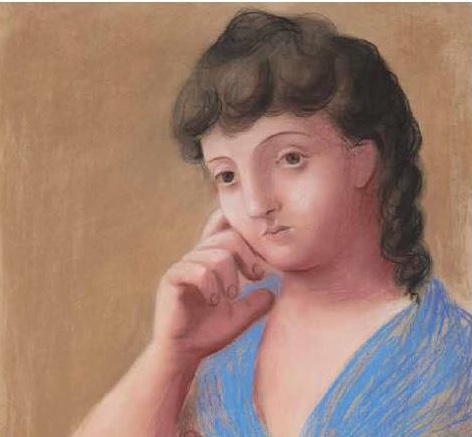
Picasso's inspiration in creating pastel Women accommodated, 1921 ($10-15 million) was twofold, pursuing parallel interests in subject matter and style. The model is the artist's wife, Olga, née Khokhlova, whom she met in 1917 while she was a principal dancer in Serge Diaghilev's Les Ballets Russes. They married the following year and shortly thereafter took an apartment on rue la Boétie, the new epicenter of the Parisian art trade. Sales were making a rich man out of Picasso. On February 4, 1921, Olga presented husband, with a son as firstborn, her only male heir on her side of the Ruiz-Picasso family. The grateful artist celebrated the event in a series of motherhood drawings and paintings, while also honoring Olga as a timeless model of graceful and fruitful femininity in figure paintings and portraits.
Typically, Picasso loved the idea of working against the tide and contravened "the call to order" in the aberrant proportions of face and body he chose to use in his classical figures. In Femme accoudée, Picasso subjected Olga's finely boned Slavic features to subtle Rococo distortions, enlarging the space between her eyes while miniaturizing her lips. Also present here, as a hallmark of Picasso's classical manner, is the apparent enlargement of the model's arms and hands. This anti-naturalistic suppleness in plastic forms derives from precedents in Picasso's earlier figurative styles, as well as in his Cubist practice, and was to prevail in all of his subsequent work.
Painted November 28, 1924, Envelope de woman au Sheer Blue di Pablo Picasso ($8-12 million) – pictured at left, is among the latest in a series of elegant and hauntingly enigmatic neoclassical portraits the artist painted during the early years of the decade. Dark hair, the sitter's pensive, melancholy gaze, and refined, perfectly chiseled features immediately reveal Olga Khokhlova's presence and character. This painting shows the pinnacle and subtle power of expression that Picasso could conjure while working in the coldly sensual, urban style of portraiture that Olga had inspired in her work. In a few months, the artist's decades-long fascination with classicism would give way to a wholly transformative immersion in the convulsive intensity of the Surrealist revolution.
Painted in 1896, Dancer ($6-8 million) is among the most important works by Henri de Toulouse-Lautrec in the ballet theme. As Lautrec entered his studio, he stared at his model as she adjusted the layers of tulle in the ballet tutu he'd just donned in preparation for their work session together. Leaning against a large mirror, the young woman would appear to the artist as if she were bowing to an audience. Her off-centre stance, the angled polygon of her shoulders and her bent-back arms created an extemporaneous and pictorially perfect contrasting effect. Quickly appreciating the beauty of the moment, Lautrec painted his model just like that. The result is a quiet and mysterious painting, a serendipitous success of timing and observation, a sensitive evocation of a solitary figure in an intimate and moody setting. Lautrec's Danseuse includes in its distinguished provenance the renowned German dealer Justin K. Thannhauser, whose collection has been given its own wing in the Solomon R. Guggenheim Museum, New York. A subsequent owner was Arthur Murray, a ball-room dancing specialist, who developed lessons and trained instructors in the business. In 1938 Murray founded the dance franchise that bears his name.


